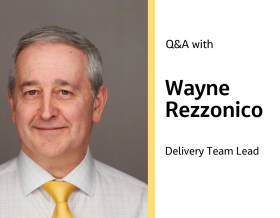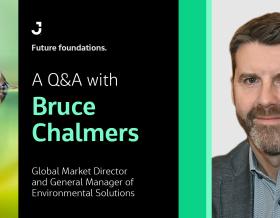Navigating the Rising Tide: Transformative Solutions for Coastal Resilience
Jacobs Global Director for Water Resources and Resilience Solutions Adam Hosking discusses key trends in coastal resilience, from positive community impact and social value to the importance of thinking big

Some of the most acute and devastating impacts of climate change are being felt along our coastlines. From rising sea levels and storm surges, to coastal erosion and loss of marine habitats – coastal communities and environments face a set of critical challenges that are only going to intensify.
A recent study by the United Nations Development Program projects that, on our current emissions pathway, the coastal populations at high risk of flooding will increase fivefold over this century, from 14 million today, to nearly 73 million by the end of the century.
No matter how quickly the world decarbonizes, sea levels will continue to rise “for centuries to millennia,” according to the Intergovernmental Panel on Climate Change (IPCC); this so called ‘committed’ sea level rise represents a colossal economic, social and environmental challenge for coastal areas. The only question to be asked is – how soon will we act?
At Jacobs, I lead a multi-disciplinary global team of engineers and problem solvers developing industry-leading coastal resilience solutions. We work on transformative programs – from TEAM2100 on the Thames Estuary in London to the Port of San Francisco Waterfront Resilience Program – that will protect communities for generations and create wider socio-economic benefits.
It’s clear the scale of the response requires us to look beyond traditional approaches and develop transformative solutions that reshape our coastal communities and environments for the better, while creating governance structures fit for a changing world. Here’s how:
Create vibrant coastal areas: We need to think differently about coastal resilience and move away from building isolated hard structures along the coastal edge and instead integrate these features into the waterfront. Ultimately, resilience measures should not reduce access to waterfronts – often the lifeblood of the local community – but enhance it, creating positive community impact and improving both social and economic resilience.
Focus on social value and equity: Coastal environments can have significant health and wellbeing benefits and it’s important that these unique benefits are understood and integrated into planning decisions alongside the typical economic metrics. In many parts of the world, coastal communities are remote and economically disadvantaged. It’s essential that economic indicators alone do not dictate where and how resilience and protection is provided.
Embrace the full suite of solutions: The complexity of coastal climate risk and the imperative to improve social outcomes requires a holistic, risk-based approach. Integrating long-established ‘hard engineering’ approaches with nature-based solutions, stormwater management, land use management (including relocation where necessary) and digital tools along with a clearly defined pathway to adapt to future change, will deliver truly sustainable coastal resilience. By embracing a holistic, long-term approach, we can create resilient communities and environments while also reducing embedded carbon, enhancing biodiversity and improving social outcomes.
Think big: In coastal cities like Houston, New York and London, millions of people are at risk from the impacts of climate change. The potential economic consequences of inaction lie in the billions or trillions of dollars. In these locations, smaller local protection solutions may not be feasible, particularly where we look to maintain a human connection with the waterfront. An increasing number of locations are turning to ‘regional’ scale approaches such as storm surge barriers and barrages, which can be particularly effective in natural harbors or estuaries. An increasing number of locations around the world are looking at these systems as a viable long-term solution, with learnings shared through the I-Storm network to improve outcomes.
Take a programmatic approach: Regardless of the solutions under consideration, coastal protection systems will need to be adjusted over time to address the evolving impacts of climate change. Consistency in planning, design and delivery is essential to sustainable, resilient communities – and taking a programmatic approach provides greater assurance and consistency in delivery of resilience outcomes in both the near- and long-term. The programmatic lens also provides a more effective approach to addressing the complex interdependent issues and a focus on optimizing funding deployment.
Co-ordinate the response: Recognizing the scale and complexity of the coastal resilience challenge, authorities around the globe are looking to develop frameworks to co-ordinate their response. In recent years, Singapore PUB has established a Coastal Protection Department bringing together teams from two agencies, and in New York City a Bureau of Coastal Resilience was established within its Department of Environmental Protection to bring all flood risk management activities into one place. This co-ordination facilitates the clarity and consistency of decision making and engagement that is essential to deliver upon the needs and opportunities outlined above.
At Jacobs, we take great pride in our ability to deliver innovative and sustainable solutions in the marine and coastal environment. As a global leader in coastal planning and engineering, we balance the need to develop resilient coastlines with the creation of multi-functional solutions that incorporate natural processes and provide broad benefits to coastal communities and habitats. Learn more about our solutions for resilient environments.
About the author

As Jacobs Global Director for Water Resources and Resilience Solutions, Adam Hosking has responsibility for solutions including integrated water management, stormwater, flood and coastal risk management and climate change adaptation services. With a background in coastal geomorphology, he is a Fellow of the Chartered Institute of Water and Environmental Management (CIWEM) and Chartered Scientist with more than 29 years’ international experience in projects and programs addressing coastal climate change adaptation and resilience. He is Chair of CIWEM’s National Climate Change Panel.
Future Foundations.
Co-creating the world to come

From developing climate resilience and transitioning to a low-carbon future, to modernizing and transforming infrastructure, governments and businesses face critical challenges. How they respond will define our future.
As our clients navigate these challenges, we help them think differently – working together to pioneer tomorrow's infrastructure solutions and build the foundations for a prosperous, secure future.























































